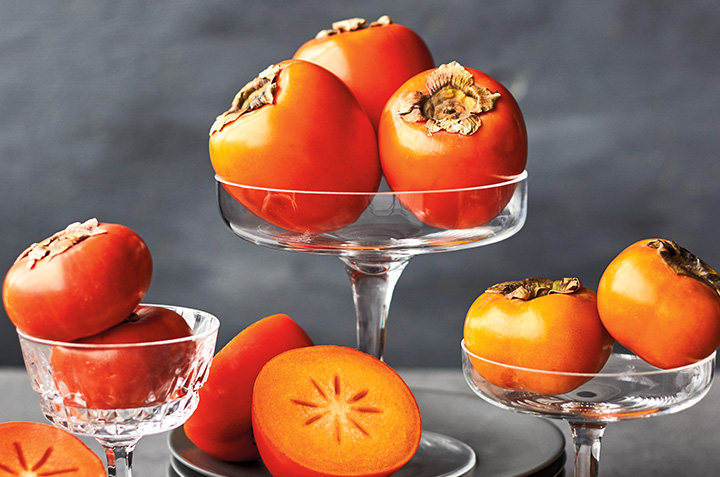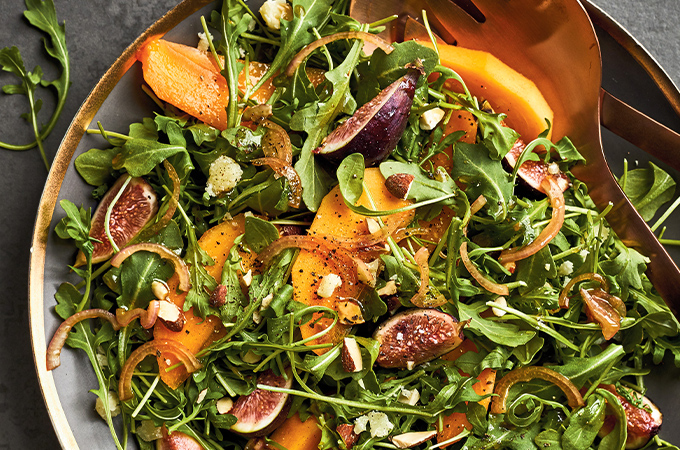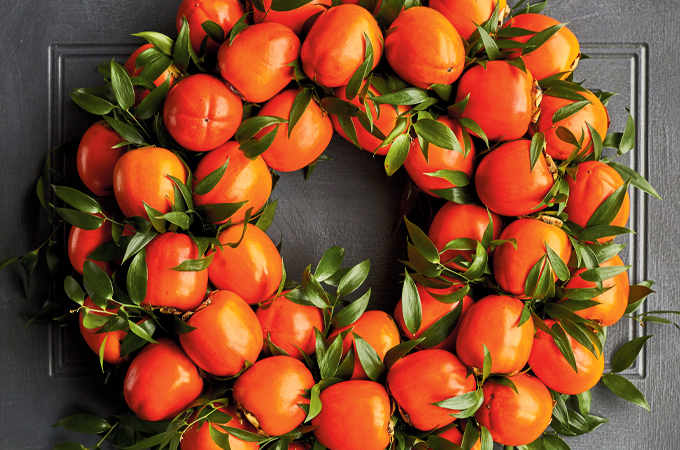
INGREDIENT
5 Facts About Persimmons
Astringent persimmons
More tannic, astringent persimmons need to be consumed when very ripe; telltale hints include soft, glossy skin, black sun spots and custard-like flesh. Hachiya is the most common variety.
1. Hachiya
This acorn-shaped fruit has a waxy skin in burnished orange that often develops dramatic black markings as it matures. Bite in too soon and the tannins will create a strange drying sensation in your mouth. You want it fully ripened: A week or two after purchase, it will lose its bitterness and should be almost jiggling in anticipation. Slice it in half and dig into the sweet pulp with a spoon—nature’s pudding! Placing it in a paper bag with apples or a banana will speed up the ripening process.
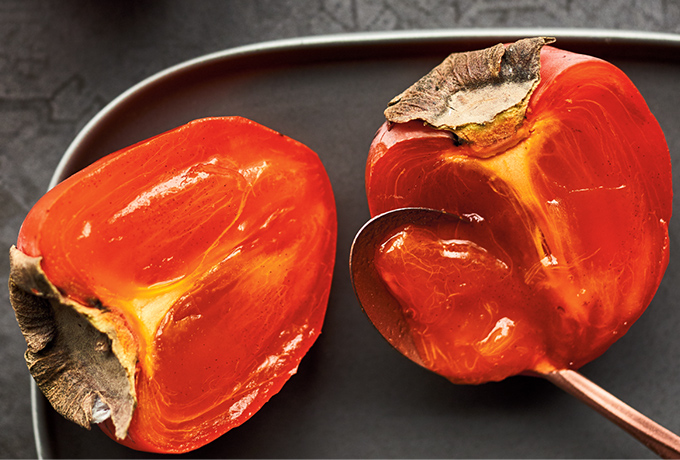
Non-astringent persimmons
These kinds of persimmons have a firm, smooth texture, even when ripe, and can be used in our recipes at any stage. They also taste best at room temperature. Look for these three non-astringent types at supermarkets and specialty stores.
2. Fuyu
Pumpkin-coloured and plump, this commonly found variety resembles a squat tomato. Look for smooth-skinned fruit that’s firm but slightly supple to the touch. It will soften slowly over a week or more, for a tannin-free flavour that can call to mind brown sugar, pear and dates.
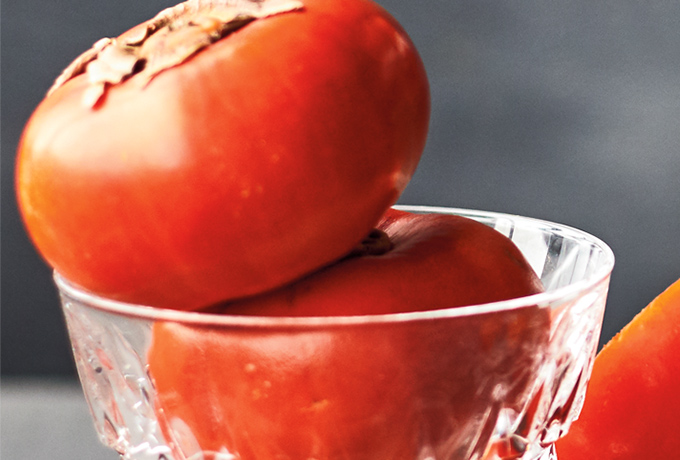
3. Sharon
Named after the Sharon Plain in Israel where it’s cultivated, this variety has some bitterness removed after harvest with carbon dioxide. The sweet pulp of Sharon persimmons can be enjoyed at any stage of ripeness, whether crisp like an apple, tender like a peach, or soft like custard. With no core and few to no seeds to deal with, it can be eaten whole.

4. Rojo Brillante
Grown in the region of Valencia, in southern Spain, this variety’s name translates as “bright red.” The fruit’s thin skin changes from yellowish to orange-red hues as it matures, and the mango-toned pulp ripens quickly for an intense sweetness. It’s also trademarked as “Persimon” with one “m.”
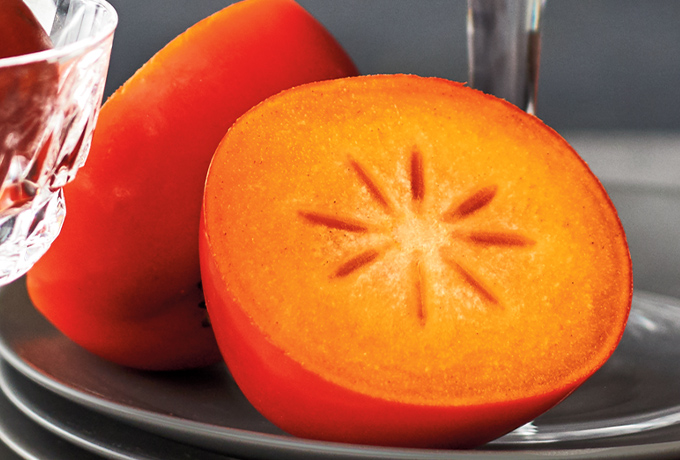
- • Persimmons are native to eastern China. They are now cultivated in several other countries and continents, from Japan (where it is the national fruit) to Europe, via the United States.
- • They’re rich in fibre, vitamins and minerals.
- • Persimmons have a thin and fragile skin, and must be handled with care.
- • They contain surprising notes of honey, spices and apricot, which pop up during their ripening process.
- • Not only are they delicious to eat, they also look beautifully decorative in a bowl.
Now that you know more about this delicious fruit, we’re sure you’re itching to cook and bake with it! Check out this article for a few colourful recipe ideas:

